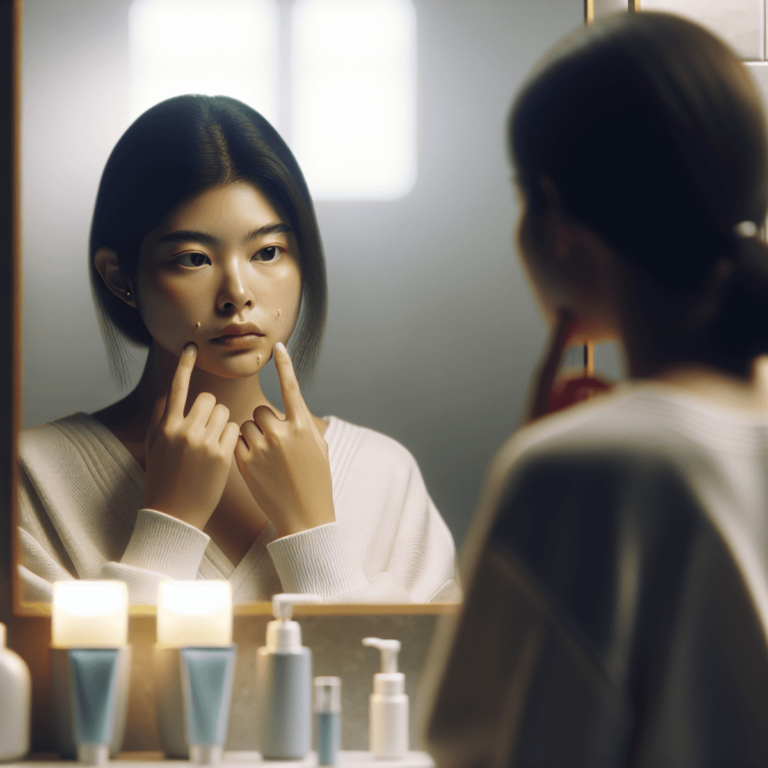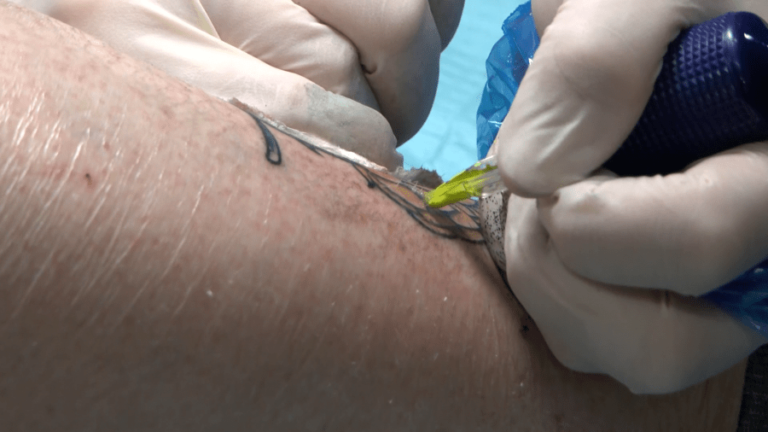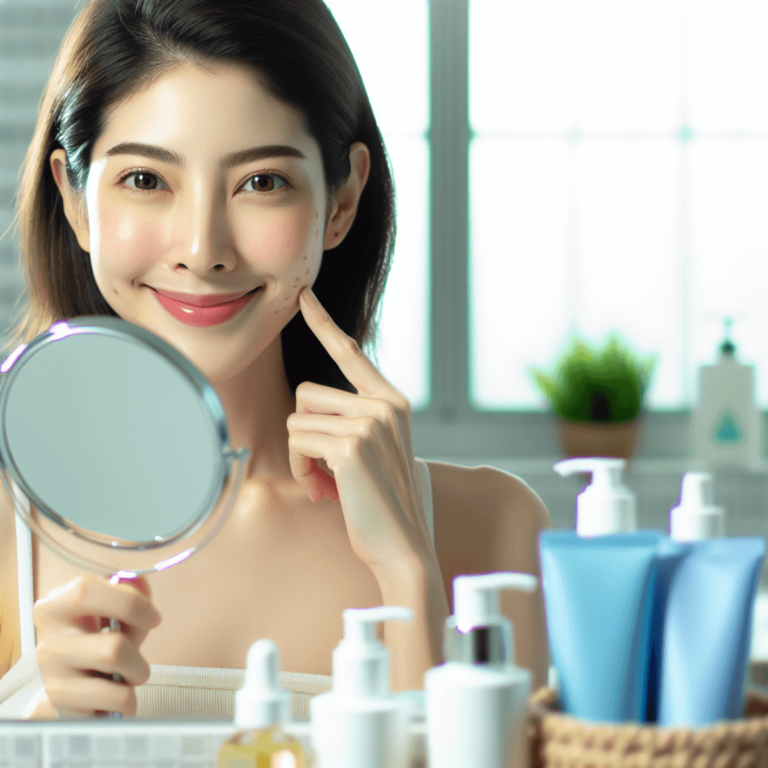How To Get Rid Of Whiteheads, According To Dermatologists

Introduction
Whiteheads are small, closed bumps on the skin that occur when hair follicles become clogged with oil, dead skin cells, and bacteria. They frequently appear on the face, neck, back, and chest, especially in individuals with oily or acne-prone skin. Addressing whiteheads is crucial not only for aesthetic reasons but also to prevent potential scarring and inflammation that can arise from untreated acne.
Why Focus on Whiteheads?
- Prevent scarring: Timely intervention can minimize long-term skin damage.
- Boost confidence: Clear skin can enhance self-esteem and comfort in social situations.
Dermatologist-Recommended Strategies: To effectively tackle whiteheads, dermatologists advise a multifaceted approach:
- Proper Skincare Routine: Implement pH-balanced cleansers and moisturizers.
- Topical Treatments: Utilize ingredients like benzoyl peroxide and salicylic acid.
- Regular Exfoliation: Prevent clogged pores through consistent exfoliation methods.
Understanding how to get rid of whiteheads is essential for maintaining healthy skin. This article explores various strategies recommended by dermatologists to help you achieve clear skin effectively.
Understanding Whiteheads: Causes and Formation
Whiteheads are small, closed bumps on the skin, a type of acne caused by clogged hair follicles. They form when the skin’s natural oil (sebum), dead skin cells, and bacteria accumulate in pores. Understanding the causes of whiteheads helps in determining effective strategies for managing and preventing them.
How Do Whiteheads Form?
The formation process involves several key factors:
- Clogged Pores: When excess sebum combines with dead skin cells, it creates a blockage that prevents the pore from breathing.
- Bacteria Growth: The trapped environment fosters bacteria proliferation, leading to inflammation and infection.
- Skin Cell Turnover: Inefficient shedding of dead skin cells can exacerbate clogging, making it essential to promote regular exfoliation.
Common Skin Types Prone to Whiteheads
Certain skin types are more susceptible to whitehead formation:
- Oily Skin: Excess sebum production increases the likelihood of clogged pores.
- Combination Skin: Areas with both oily and dry patches often experience breakouts due to varying oil levels.
- Acne-Prone Skin: Individuals with a history of acne tend to have an increased risk of developing whiteheads.
The Role of Hormonal Changes in Whitehead Development
Hormonal fluctuations play a significant role in acne development. Key points include:
- Puberty: Increased hormone levels during this stage lead to heightened sebum production.
- Menstrual Cycle: Many women notice a rise in whitehead occurrences before their periods due to hormonal changes.
- Pregnancy and Hormonal Treatments: Fluctuations during pregnancy or while on hormonal medications can trigger breakouts.
Understanding these causes allows for better-targeted approaches on how to get rid of pimples effectively. Whether you are looking for ways to remove pimples naturally and permanently or seeking quick solutions, knowing your skin type and its specific needs is crucial in crafting an effective skincare routine.
Preventive Skincare Routine for Whitehead-Prone Skin
A proper skincare routine is vital for preventing whiteheads. By addressing the underlying causes of clogged pores, you can significantly reduce their appearance and prevent future breakouts. Adopting a consistent regimen with the right products can make a noticeable difference in your skin’s health.
Key Ingredients to Look For
Cleansers play a crucial role in your skincare routine. When selecting cleansers, consider those that are pH-balanced and enriched with beneficial ingredients such as:
- Ceramides: Help restore the skin barrier and retain moisture.
- Hyaluronic Acid: Attracts and holds moisture, keeping skin hydrated without clogging pores.
- Niacinamide: Reduces inflammation and helps improve skin texture.
Using these ingredients can nourish your skin while effectively cleansing it, thus reducing the risk of whiteheads.
Choosing Non-Comedogenic Products
Opting for non-comedogenic products is essential in avoiding clogged pores. These formulations are specifically designed not to block hair follicles. Here’s how to identify non-comedogenic products:
- Look for labels that explicitly state “non-comedogenic.”
- Check ingredient lists; avoid products with heavy oils or silicones that may contribute to pore blockage.
- Consider gel-based moisturizers or lightweight lotions, which are less likely to clog pores compared to heavier creams.
Daily Skincare Practices to Keep Whiteheads at Bay
Adopting effective daily skincare practices can significantly impact the prevention of whiteheads. Follow these steps for an ideal skincare routine:
- Gentle Cleansing
- Perform cleansing twice daily—once in the morning and once before bedtime.
- Use lukewarm water along with your chosen pH-balanced cleanser.
- Gently massage the product onto your face using circular motions for about 30 seconds, then rinse thoroughly.
- Moisturizing
- After cleansing, apply a suitable moisturizer tailored to your skin type.
- Don’t skip this step; even oily skin needs hydration. Choose lightweight, non-comedogenic moisturizers that won’t exacerbate oiliness.
- Regular Exfoliation
- Incorporate exfoliation into your routine 2-3 times a week.
- Use chemical exfoliants like salicylic acid or glycolic acid rather than physical scrubs that can irritate the skin.
- Exfoliation helps remove dead skin cells and prevents them from clogging pores.
The Significance of Gentle Cleansing and Moisturizing
Gentle cleansing is crucial for maintaining healthy skin. Harsh scrubs or overly aggressive cleansing methods can strip away natural oils, leading to increased oil production as your skin attempts to compensate for dryness. This cycle can worsen acne and lead to more whiteheads.
Moisturizing ensures that your skin maintains its barrier function, providing protection against environmental factors while keeping it supple. Hydrated skin is less prone to irritation and inflammation, reducing the likelihood of breakouts.
Importance of Regular Exfoliation in Preventing Clogged Pores
Regular exfoliation is an essential step in any whitehead prevention strategy. It promotes cell turnover, helping new skin cells rise while removing dead cells that could clog pores. Consider these aspects when incorporating exfoliation into your routine:
- Select products containing effective exfoliating agents like salicylic acid, which penetrates deep into pores to dissolve excess oil and debris.
- Chemical exfoliants are often gentler than physical scrubs, making them better suited for sensitive or acne-prone skin types.
- Monitor your skin’s response; adjust frequency based on how well your skin tolerates exfoliation.
By following these preventive measures within your skincare routine, you create a solid foundation for achieving clearer skin. Consistency is key; over time, you will notice fewer whiteheads and improved overall skin health.
Effective Treatment Options for Whiteheads: Dermatologist’s Perspective
When seeking to eliminate whiteheads, understanding the available treatment options is crucial. Dermatologists recommend a combination of over-the-counter and natural treatments for effective results.
Overview of Over-the-Counter Treatments
Benzoyl Peroxide and Salicylic Acid are two common active ingredients found in many over-the-counter products designed specifically for treating whiteheads:
1. Benzoyl Peroxide
Benzoyl peroxide is an active ingredient that works by killing bacteria that contribute to acne and helping unclog pores by reducing oil buildup. It is available in various concentrations (2.5%, 5%, 10%) and it is recommended to start with lower concentrations to assess skin tolerance.
2. Salicylic Acid
Salicylic acid is a beta hydroxy acid (BHA) that exfoliates the skin, penetrates pores, and dissolves debris, preventing clogging. It is useful for reducing inflammation and redness associated with whiteheads.
Benefits and Application Methods
Using these topical treatments effectively requires proper application methods:
- Cleanse your face thoroughly before application. This ensures that the treatment can penetrate the skin effectively.
- Apply a small amount of the product directly onto affected areas, avoiding excessive rubbing or pressure.
- Allow the product to dry completely before applying additional skincare products or makeup.
- Start using these treatments once daily; as your skin adjusts, you may increase usage to twice daily if needed.
Be mindful of potential side effects such as dryness or irritation. Incorporating a gentle moisturizer can help alleviate these symptoms while maintaining effectiveness.
When to Consider Topical Retinoids
Topical retinoids are another powerful option when dealing with stubborn whiteheads:
- They promote cell turnover, preventing clogged pores from forming.
- Often recommended for those who experience frequent breakouts or have developed hyperpigmentation due to previous acne.
- Commonly prescribed retinoids include adapalene (available over-the-counter) and tretinoin (available by prescription).
Use retinoids at night since they can increase sun sensitivity. Begin with a low concentration to gauge tolerance, gradually increasing as necessary.
Exploring Natural Remedies and Holistic Approaches to Combat Whiteheads
For those interested in natural alternatives, several remedies may help manage whiteheads effectively:
Popular Natural Remedies
- Tea Tree Oil: Known for its antibacterial properties, tea tree oil can be diluted with a carrier oil (e.g., jojoba oil) and applied directly to whiteheads. Use cautiously; test on a small area first due to potential irritation.
- Clay Masks: Bentonite clay and kaolin clay are popular choices for acne-prone individuals as they absorb excess oil and draw out impurities from the skin. Apply weekly as part of your skincare routine for best results.
Effectiveness and Safety Considerations of Home Remedies
While many natural treatments show promise, their effectiveness can vary widely among individuals:
- Always perform a patch test prior to full application to ensure there’s no allergic reaction.
- Be aware that some home remedies may not provide immediate results and require consistent use over time.
Consulting with a dermatologist before starting any new treatment regimen is advisable, especially if you have sensitive skin or existing conditions.
Holistic Approaches to Managing Acne-Prone Skin
Incorporating holistic approaches can enhance overall skin health:
- Dietary Adjustments: Focus on whole foods rich in antioxidants, vitamins, and minerals such as leafy greens, nuts, fish, and fruits which aid skin health while reducing intake of high-glycemic foods that may trigger breakouts.
- Hydration: Drink plenty of water throughout the day to keep skin hydrated from within; herbal teas can also be beneficial for hydration while providing additional antioxidant support.
- Stress Management Techniques: Implement mindfulness practices such as yoga or meditation to reduce stress levels which can exacerbate hormonal changes leading to breakouts; regular exercise promotes circulation and supports healthy skin function.
Combining these various treatment options fosters an individualized approach tailored to your unique skin needs while addressing whiteheads effectively.
When to Seek Professional Help: Dermatological Treatments for Stubborn Whiteheads
Persistent whiteheads can be frustrating. Knowing when to seek professional help is crucial in your skincare journey. If you notice that over-the-counter treatments have not improved your condition after several weeks, it’s time to consult a dermatologist. Signs that suggest professional intervention include:
- Frequent breakouts despite regular skincare routines
- Development of painful or inflamed lesions
- Scarring from previous breakouts
- Whiteheads that do not respond to typical home care methods
Professional Extraction Techniques and Their Benefits
Dermatologists offer specialized treatments that can effectively remove stubborn whiteheads. Professional extraction techniques are a safe option for those struggling with persistent bumps. These methods include:
- Manual extraction: A dermatologist uses sterile tools to gently remove clogged pores, minimizing the risk of scarring and infection.
- Chemical peels: These involve applying a solution to exfoliate the skin’s surface layers effectively. Peels help unclog pores and promote cell turnover, leading to clearer skin.
Both methods provide immediate results while also helping prevent future breakouts.
Prescription Medications for Severe Cases: A Dermatologist’s Insight
In situations where professional treatments are necessary, dermatologists may recommend prescription solutions. The choice of medication largely depends on the severity of your acne and individual skin type.
When Prescription Medications Are Necessary
Prescription medications become vital when:
- Acne persists despite using over-the-counter products
- Breakouts lead to significant emotional distress or impact daily life
- There is a risk of scarring or skin damage
Two commonly prescribed medications are azelaic acid and hormonal treatments like birth control pills.
Benefits of Azelaic Acid and Hormonal Treatments
Azelaic acid is known for its anti-inflammatory properties, making it effective in treating acne. It works by:
- Reducing bacteria on the skin
- Unclogging pores by promoting cell turnover
- Lightening hyperpigmentation associated with acne scars
Hormonal treatments, particularly oral contraceptives, can be beneficial for women experiencing breakouts linked to hormonal fluctuations. These treatments work by:
- Regulating hormones that trigger excessive oil production
- Reducing inflammation associated with hormonal acne
Understanding these options can empower you in your journey toward clearer skin. Regular consultations with a dermatologist ensure you receive personalized care tailored to your unique needs, enhancing the efficacy of your treatment plan while keeping your skin healthy and vibrant.
Lifestyle Changes That Can Aid in Whitehead Prevention and Management
Your lifestyle plays a crucial role in maintaining clear skin and preventing whiteheads. Implementing specific changes can enhance your skincare routine and minimize breakouts.
The Impact of Diet on Skin Health
Certain foods can trigger acne flare-ups, including whiteheads. Consider the following dietary adjustments:
- Dairy Products: Some studies suggest that milk and dairy can increase acne vulgaris due to hormones present in these products.
- High Glycemic Index Foods: Foods like white bread, pastries, and sugary snacks may spike insulin levels, leading to increased oil production in the skin.
- Processed Foods: Fast food and pre-packaged meals often contain unhealthy fats that may worsen skin conditions.
Incorporating nutrient-rich foods can provide benefits:
- Fruits and Vegetables: Rich in antioxidants, they help combat inflammation.
- Omega-3 Fatty Acids: Found in fish, flaxseeds, and walnuts, these acids support skin health by reducing inflammation.
Importance of Hydration and Nutrition
Staying hydrated is essential for overall skin health. Aim for at least eight glasses of water daily. Proper hydration helps maintain skin elasticity and prevents dryness. Additionally, a balanced diet rich in vitamins A, C, E, and zinc contributes to healthier skin.
Stress Management Techniques
Stress is a significant factor influencing breakouts. Implementing stress-management techniques can aid in controlling acne:
- Mindfulness Practices: Activities like yoga or meditation can reduce stress levels.
- Regular Exercise: Physical activity promotes blood circulation and increases endorphins, which improve mood.
- Sleep Hygiene: Aim for 7-9 hours of quality sleep each night to allow your body to recover and regenerate.
By embracing these lifestyle modifications alongside your skincare routine, you will enhance your ability to combat whiteheads effectively.
Common Mistakes to Avoid in Your Skincare Journey Against Whiteheads
Addressing whiteheads effectively requires understanding common pitfalls that can hinder your progress. Below are critical mistakes to steer clear of:
1. Popping Whiteheads
Popping whiteheads may seem like a quick fix, but it can lead to significant complications. This practice often causes inflammation, increases the risk of scarring, and can even lead to further breakouts. The bacteria and oils pushed deeper into the skin during this process exacerbate existing issues.
2. Using Harsh Products
Many people resort to aggressive scrubs or alcohol-based toners in hopes of achieving clear skin. However, these harsh products can strip the skin of its natural oils, disrupting its barrier and causing irritation. Sensitive skin reacts poorly to such treatments, leading to redness and increased oil production as a compensatory response.
3. Neglecting Skincare Consistency
Skincare is not a one-time effort; consistency is key. Establishing a routine that includes gentle cleansing, moisturizing, and regular exfoliation is vital for maintaining healthy skin. Patience plays an essential role; results may take time to appear. Abrupt changes in regimen or frequent switching between products can confuse your skin and hinder improvement.
Awareness of these common mistakes allows you to make informed decisions on your skincare journey against whiteheads. Addressing these areas will pave the way for healthier skin and minimize breakouts effectively.
Conclusion: A Comprehensive Approach to Achieve Clear Skin with Confidence!
Seeking professional advice is crucial in effectively managing whiteheads. Consulting with dermatologists can provide personalized strategies to address your specific skin needs. They can guide you through various treatment options and help improve your skincare routine.
Maintaining long-term skincare goals is essential for achieving and maintaining clear skin. Consider incorporating the following practices into your daily life:
- Consistent Skincare Routine: Prioritize products that suit your skin type, focusing on gentle cleansing and effective moisturization.
- Healthy Lifestyle Choices: Include nutritious foods, stay hydrated, and manage stress levels to support your skin health.
- Regular Follow-ups: Keep in touch with your dermatologist to monitor progress and make necessary adjustments to treatments.
Addressing whiteheads requires a comprehensive approach, combining both skincare techniques and lifestyle changes. By committing to these practices and seeking professional guidance when needed, you empower yourself in the journey of how to get rid of whiteheads, according to dermatologists. This integrated strategy not only targets existing concerns but also establishes a foundation for healthier skin in the future.
FAQs (Frequently Asked Questions)
What are whiteheads and how do they form?
Whiteheads are a type of acne that occurs when hair follicles become clogged with oil, dead skin cells, and bacteria. They form when the clogged pore is closed, leading to a small, white bump on the skin’s surface.
What skincare routine is recommended for preventing whiteheads?
A proper skincare routine for whitehead-prone skin includes using pH-balanced cleansers, non-comedogenic products, and regular exfoliation. Key ingredients to look for in cleansers are ceramides, hyaluronic acid, and niacinamide.
What over-the-counter treatments are effective for whiteheads?
Topical treatments such as benzoyl peroxide and salicylic acid are commonly recommended for treating whiteheads. These products help to reduce inflammation and unclog pores. It’s important to follow application instructions for best results.
When should I seek professional help for stubborn whiteheads?
You should consult a dermatologist if you have persistent whiteheads that do not respond to over-the-counter treatments. Professional extraction techniques, chemical peels, and prescription medications like azelaic acid may be necessary for severe cases.
How can lifestyle changes impact whitehead prevention?
Lifestyle modifications such as maintaining a balanced diet, managing stress levels, and ensuring proper hydration can significantly impact skin health. Certain foods may trigger breakouts, so it’s essential to be mindful of your diet.
What common mistakes should I avoid in my skincare routine against whiteheads?
Common mistakes include popping pimples, using harsh products like scrubs or alcohol-based toners, and neglecting consistent skincare practices. These actions can worsen the condition of your skin instead of improving it.










